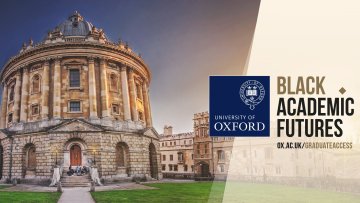As part of the University of Oxford’s Black Academic Futures Scholarships, the Mathematical Institute and Pembroke College are delighted to invite talented UK Black or Mixed-Black students to apply for one fully funded postgraduate scholarship in 2022-2023 on one of the courses below:
DPhil in Mathematics or Centre for Doctoral Training in Mathematics of Random Systems.


